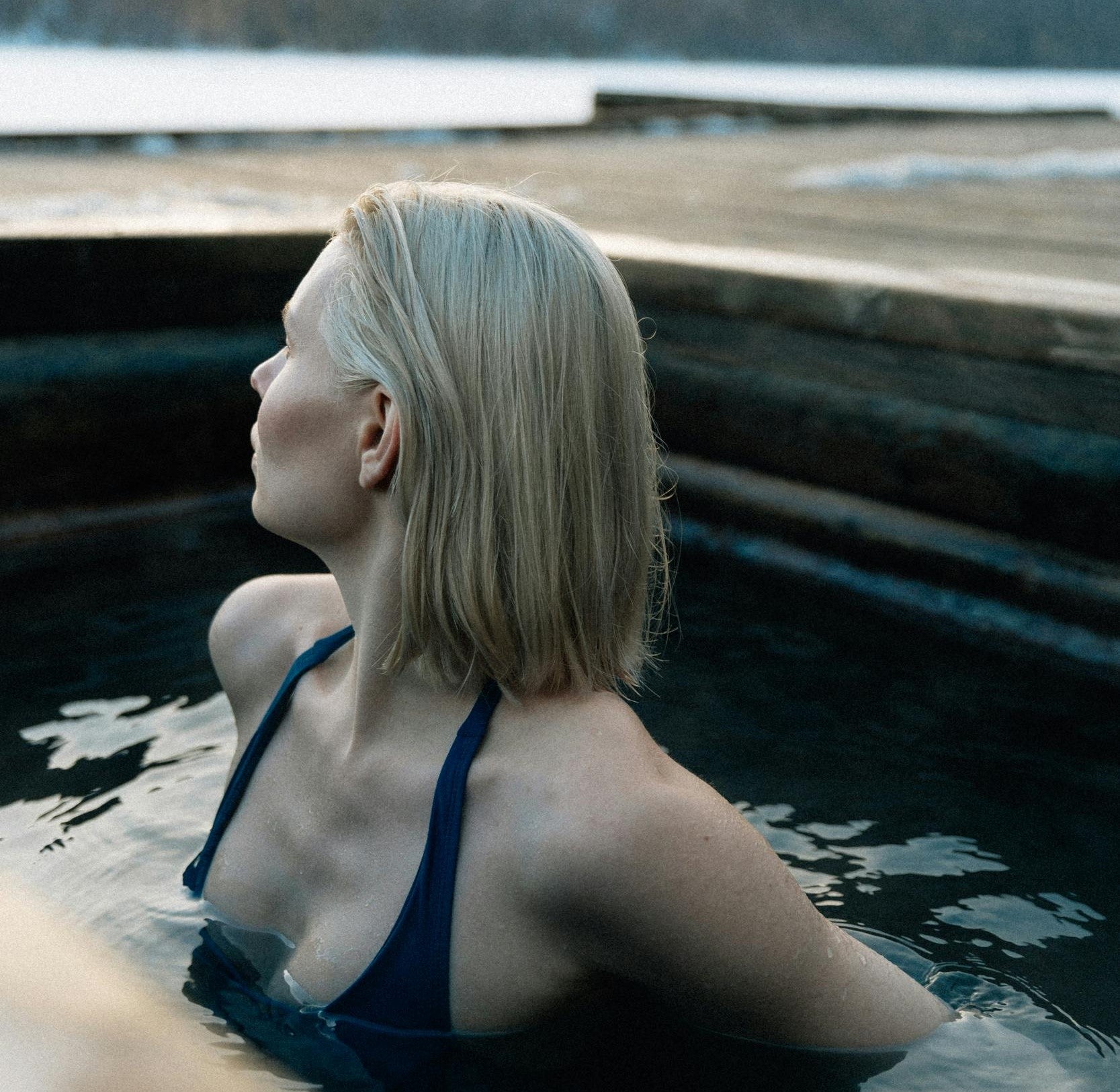In today’s fast-paced world, we’re always looking for effective ways to improve our wellbeing with little time... and effort and cold water therapy and infrared saunas can be a fantastic ritual to add to your toolkit. Having gained quite a bit of popularity in the last few years and rightly so, they both offer an impressive array of benefits. Here we chat to Max Reynard, co-founder of London-based Sauna & Plunge to hear more...
What Makes Hot And Cold Exposure So Beneficial?
“Hot and cold exposure provides a huge range of health benefits with very little input,” says. “These range from improved blood circulation and detoxing to improved recovery. Both are an excellent remedy for a wellbeing boost."
Max goes on to emphasise that all of these health benefits can be achieved through a brief weekly session of sauna or cold plunge therapy. “Pound for pound, it’s one of the most efficient ways of staying healthy and maximising the effectiveness of a health ritual with minimal input."
The Difference Between Hot and Cold: Infrared Saunas vs Cold Plunges
When it comes to sauna therapy, infrared saunas and traditional Finnish saunas offer different, but complementary benefits. “As opposed to traditional saunas that heat the air, infrared saunas provide a more efficient, deep-penetrating heat,” explains Reynard. “Infrared therapy helps purify and detox whilst boosting circulation and helping with repair. It’s also known to support skin health too," he adds.
On the other hand, cold water plunges offer an entirely different set of benefits. “Cold exposure stimulates noradrenaline for an energy boost and peak mental focus, which can last for up to six hours,” says Reynard. “This is why cold plunges are commonly adopted by athletes looking to enhance performance and recovery.”
Combining Infrared Sauna And Cold Plunge for Maximum Benefits
At Sauna & Plunge, the practice of alternating between hot and cold therapy is carefully designed to boost the benefits of both temperatures. The trick is to combine them in a controlled and efficient environment.
“When you alternate between the infrared sauna and a cold plunge, you’re able to maximise the exposure time to each temperature,” explains Max. “For example, after spending 20-25 minutes in an infrared sauna, you can tolerate a longer time in the cold plunge because your core and skin surface temperatures have already been raised to their maximum. This improves your tolerance and extends your exposure to the cold, which enhances the efficacy of the practice.”
The reverse is also true. Popping back in to the sauna after a cold plunge can increase your ability to tolerate heat too. This back-and-forth process helps enhance your body’s natural ability to regulate temperature and stress responses.
How Do Hot And Cold Exposure Improve Tolerance?
By practicing both infrared sauna and cold plunge therapy, you can enhance your body’s ability to handle extreme temperature changes, which in turn improves your overall health. “By switching between hot and cold environments, you not only help to increase the breadth of results you get from each experience, but you can also help to improve your tolerance and time thresholds,” says Reynard. “This process helps you build resilience, making it easier to transition between the two temperature extremes without feeling overwhelmed.”
However, Max emphasises that it’s important to approach hot-cold therapy carefully. “We don't encourage switching too quickly between hot and cold environments. At Sauna & Plunge, we help you with a recommended transition process so that you're moving between temperatures safely and we always emphasise listening to your body.”
Debunking Myths About Cold Water Therapy
While cold water therapy has gained quite a bit of momentum in the wellbeing space lately, there are still some myths going around. One common misconception is that cold plunges only speed up physical recovery and aren’t effective when you’re feeling under the weather or poorly.
“There is however growing evidence to support the idea that cold water therapy can actually help strengthen your immune system and aid in recovery from illness," adds Max. "This is because cold exposure helps to stimulate your lymphatic system, which boosts the production of white blood cells and can help your body fight off pathogens. In fact, one of our regular members had a bad flu, and after a cold plunge, he felt significantly better and said it was a transformational experience for him.”
Infrared Saunas vs Traditional Saunas: What's The Difference?
Traditional saunas heat the air around you which often means many of us get quite sweaty in response to the high temperatures. On the other hand, infrared saunas provide deeper, more targeted heat by emitting infrared rays that penetrate the skin. This main difference is why infrared saunas do in fact offer some alternative benefits such as improved blood circulation and muscle recovery. “As infrared heat penetrates deeper into the body than traditional sauna heat, it offers a more efficient way to help heal and detoxify,” explains Max.
Conclusion: The Power Of Cold And Heat
The combination of both infrared sauna therapy and cold water plunges together can be a super effective wellbeing ritual. Whether you’re looking to increase muscle recovery, boost circulation, improve skin health or simply uplift your mood, these practices can offer something for everyone. By alternating between hot and cold therapies, you can maximise your body’s natural ability to heal and regenerate.
For more information or to book an experience at Sauna & Plunge, head to Sauna & Plunge.


